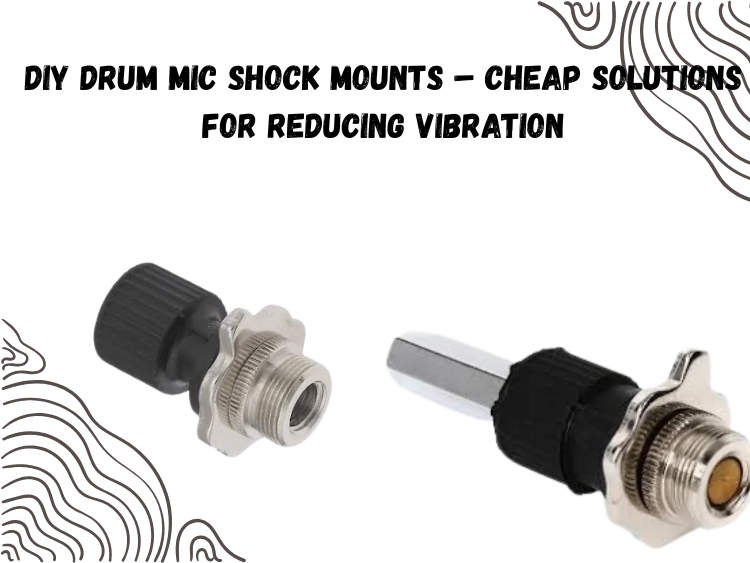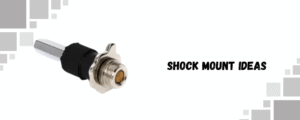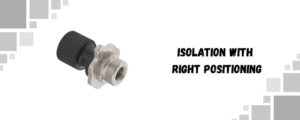Studio-grade isolation shouldn’t be locked behind a paywall—especially when it comes to miking drums. Vibrations from stands, floor toms, or kick drums can easily ruin a solid take, but not everyone can (or should) drop cash on high-end shock mounts. The good news? You can absolutely reduce unwanted rumble and resonance using simple, low-cost methods that work.
Here’s how to make your own drum mic shock mounts and keep your recordings clean without bleeding your wallet dry.
Why You Actually Need a Shock Mount for Drum Mics
Drum kits are vibration central. Every hit—especially on the kick and toms—travels through mic stands and into the mic body. That means if your mic isn’t isolated, it’s not just picking up sound—it’s picking up tremors.
Without shock mounting, you’ll often hear low-end thumps, subtle rumbles, or mechanical rattling in the mix. This becomes even more of an issue in tighter home studios or live venues with resonant stages.
And while commercial shock mounts do a great job of solving this, they’re not always budget-friendly—especially if you’re outfitting an entire drum kit. That’s where DIY comes in.
Basic DIY Shock Mount Idea #1: Hair Ties & Binder Clips
Let’s start with the most accessible method. All you need are:
- 4 large binder clips
- A handful of strong hair ties or elastic bands
- A standard mic clip
Here’s what you do:
- Clip the binder clips onto the sides of your mic clip.
- Thread hair ties across diagonally—crisscross style—to form a suspension net.
- Gently place the mic inside the web so that it floats without touching the clip directly.
You’ve just created a basic shock-absorbing cradle. It won’t look studio-polished, but it gets the job done for most snare or tom applications.
Option #2: PVC Pipe Mount Hack
If you want something a little more stable, this method uses:
- A short section of PVC pipe (3–4 inches in diameter)
- Foam padding (from packaging or old mic cases)
- Rubber bands or string
- Mic clip and stand
Cut the PVC to size, line the inside with foam, and then suspend your mic inside using string or bands anchored at four points around the rim. The foam and suspension combo isolates the mic from vibrations passing through the pipe and stand.
This hack works best for larger drum mics like the ones you’d use on a floor tom or kick.
Hack #3: Repurpose What You Have
Still not convinced? Try raiding your junk drawer. You’d be surprised how many shock-absorbing materials you already have. Old mouse pads, neoprene sleeves, or even packaging from mic kits can be cut to size and layered between your mic and mount. Soft washers between the mic clip and stand can also reduce contact noise.
It’s not about how it looks—it’s about keeping noise out of your signal chain.
Combine Isolation with Proper Mic Placement
Isolation’s great, but bad positioning will still wreck your sound. Make sure you’re also placing your mics where they’re least likely to pick up mechanical noise. For example:
- Don’t place tom mics too close to shell-mounted stands
- Keep kick drum mics slightly off-axis to avoid direct thuds
- Use boom arms to distance mics from the stage floor
Bonus Tip: Wrap Your Stands
Mic stands are sneaky culprits. They pick up stage vibration fast, especially in louder live environments. Wrapping your stand joints with foam, neoprene tape, or even old fabric helps mute those subtle metal-on-metal noises. Combine this with your homemade shock mount, and your setup is suddenly dead quiet without expensive gear.
When to Upgrade From DIY
If you’re recording a demo, jamming with friends, or just building your rig, DIY shock mounts are more than enough. But once you’re pushing into critical recording territory—like professional multitrack sessions or live shows with front-of-house mixing—it’s worth upgrading.
Final Thoughts
DIY shock mounts won’t win design awards, but they’re shockingly effective. With a few elastic bands, some recycled foam, and a little ingenuity, you can reduce mic rumble, protect your gear, and improve your sound.
Don’t let budget constraints hold your recordings back—make your own solutions, and upgrade only when the time is right.
Need a reliable base to start your mic journey? Try the 7-piece 5 Core drum mic kit, which includes mic holders ready for customization and homebrew isolation.



